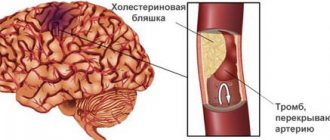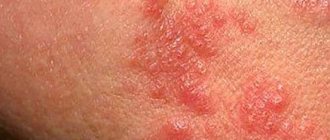Mental ill-being, an endogenous disease of the schizophrenia spectrum, a severe chronic illness leading to a disorder of mental activity - schizophrenia has been known to mankind throughout the history of existence. Despite this, diagnosis remains challenging. Not every psychotherapist is able to recognize the illness. The disease is characterized by significant clinical polymorphism. Schizophrenia changes a person’s behavior - that’s a fact. Worldwide, 1% of people are diagnosed, regardless of gender, race or continent. The rate may be higher due to true morbidity with mild or erased forms, which are not taken into account in official statistics.
Manifestation of symptoms
Schizophrenia symptoms and signs have three types: positive, negative and cognitive. They appear equally in both women and men. Some symptoms may be difficult to recognize as signs of mental illness. They look like laziness, depression, psychosis. If you look in more detail, the state of psychosis is indeed typical for people with this disease. Schizophrenia in women or men manifests itself at different ages. Schizophrenia in men from 15 to 35 years, and in women from 27 to 37 years.
Characteristic features of the manifestation of the disorder
Among mental illnesses, there are those whose primary symptoms are almost similar. It happens that a patient turns to a specialist with typical signs of psychosis, but a more detailed diagnosis reveals symptoms that do not correspond to the initial diagnosis. There are indicators, the manifestation of which is characteristic only of specific mental disorders.
For schizophrenia these are:
- Openness of thoughts. The patient is sure that everything he thinks about is available to others. At the same time, a stream of some completely unnecessary information begins to get confused in the head, intertwined with other useless conclusions. All this comes to mind is completely out of place. The person loses control over these thoughts, unable to think about anything else.
- Lack of thoughts. At some point, a person, realizing who he is, what he is doing and where he is, clearly understands that he is thinking about absolutely nothing. There is just a ringing emptiness in my head.
- Delirium of physical or mental influence. This symptom is also associated with the patient’s thoughts. It seems to him that someone is controlling him, imposing his own opinion, forcing him to perform various actions. In physical terms, this is a feeling of pain for no apparent reason.
- Pseudohallucinations. These are those situations when a person hears, sees or feels voices, images, smells invented by him.
- Emotional disturbances. These include apathy and manifestations of pathological experiences.
The reasoning of a schizophrenic is built not on the basis of investigative and logical conclusions, but on signs of similarity. This is where symbolic thinking comes into play. A person, for example, gets on a bus, paying attention not to its number, and therefore the direction, but to its color, which goes well with his shoes.
It is very difficult for such people to identify a goal for themselves, but it is even more difficult to strive for it. A person with schizophrenia loses time. He sincerely does not understand how it is possible to be late somewhere or why he cannot get, for example, to the doctor half an hour before his appointed time.
Schizophrenia is characterized by symptoms of the so-called positive or negative orientation. Positive symptoms do not mean the acquisition of some good qualities; what is meant here is that the following are added to the existing characteristics of a person:
- rave;
- hallucinations;
- violation of personality boundaries.
Negative symptoms of schizophrenia involve the decline of certain brain functions and manifest themselves as follows:
- lack of initiative;
- decreased concentration, attention and memory;
- increased fatigue;
- lack of interest;
- inhibition of facial expressions and gestures;
- social isolation;
- loss of the ability to enjoy life.
Unmotivated anxiety or compulsive disorders may be precursors to characteristic schizophrenic symptoms. The patient does not find anything unusual in his actions, so all responsibility for the timely start of treatment lies with relatives or friends.
Emotional disturbances in schizophrenia manifest themselves as follows:
- development of autism;
- loss of the volitional component of the psyche;
- violation of associative thinking;
- demonstration of directly opposite feelings towards the same object;
- confidence in one’s genius, but, at the same time, lack of recognition;
- apathy.
In adults
It has been noticed that among the adult population, there are more men suffering from schizophrenia than women, and it develops at a relatively earlier age. In addition, the symptoms of the disease in representatives of the stronger sex are more pronounced and noticeable to others. How do they manifest themselves?
- Loss of communication abilities.
- Social ineptitude.
- Danger to society.
- Suicidal behavior.
Schizophrenic disorder, affecting the psyche of an adult, completely destroys some of its parts. Most often this is the sphere of self-awareness, self-respect, inner spiritual harmony and self-love. As a result, difficulties arise in communication and perception of reality. This does not happen in one day. At first, attacks occur only occasionally, but as the disease progresses, they become more frequent and gain strength.
In children
Schizophrenia can also develop in childhood. And, although this does not happen as often as in adults and adolescents, it is necessary to know its signs in order to begin the fight against the disease as early as possible. Parents should be concerned about the following behavior patterns of their child:
- Inexplicable fear. The baby stubbornly refuses to go to his room or approach a certain object. Or, on the contrary, he talks about terrible creatures coming to him, indicating their exact location.
- Unusual fantasies. During the game, the child imagines himself as a cartoon or fairy tale character and is so immersed in this role that he continues to behave in a specific manner for quite a long period.
- Decrease in intelligence. Academic performance and concentration deteriorate. The child strives for privacy, although previously he enjoyed communicating with his peers.
- Strange actions. They manifest themselves as incoherent speech and complaints about voices in the head. The child behaves warily, constantly looks around and listens, and speaks in a whisper.
- Expressing emotions that are inappropriate to the situation.
- Manifestation of cruelty or even aggression towards others.
Symptoms of schizophrenia in children are most characterized by their manifestation in a vague form. Therefore, they can be mistaken for shortcomings of upbringing without paying due attention. Childhood mental disorders develop into much greater illnesses than those acquired after the age of 20.
Description of positive symptoms
Abnormal judgments and obsessions are noted at this stage. Schizophrenia causes a disorder of this kind against the will of the sick person. He can philosophize too much and conduct meaningless discussions on topics of an immense and global nature. The topic of conversation is often not only devoid of meaning, but also disordered in the style of narration, and there is a constant jumping from topic to topic. Positive signs of schizophrenia in women and men are accompanied by delusional states, motor and thinking disorders, and hallucinations.
Variety of forms
Another problem that complicates the diagnosis of schizophrenia is related to its polymorphism. There are four main types of disorder:
- simple;
- catatonic;
- paranoid;
- hebephrenic.
In addition to the types of schizophrenia, there are also forms of its course - fur-like, continuously flowing, latent, malignant, sluggish, recurrent, etc. The symptoms of these varieties are similar. But there are also specific signs, for example, catatonia (motor disorders) in catatonic schizophrenia. During its development, alternation of excitement and stupor is observed.
In paranoid symptoms, delusional symptoms dominate, and from stage to stage the delusion becomes more complex and reasoned. However, the presence of this symptom in this form does not exclude the possibility of its occurrence in other types of schizophrenia, including catatonic.
Moreover, some types of psychopathology progress rapidly. Thus, with hebephrenia, a person becomes unrecognizable in just a few years. But sluggish and latent ones develop over many years, slowly but systematically affecting thinking almost unnoticed by the patient.
All these factors greatly complicate professional diagnosis, so often there is no need to talk about self-detection of the disease.
Description of negative symptoms
This group includes signs of schizophrenia with deeper emotional disorders. A person loses the ability to enjoy life. He falls into a depressed state or simply tries to protect himself from society. A neutral or bad mood is observed, but in rare cases the opposite manifestation occurs with an increase in mood. People with emotional disorders are not interested in the feelings of others. And they feel much more comfortable spending time alone. Schizophrenia manifests symptoms and signs of a negative type in the aspect of decreased sexual desire, ignoring hygiene rules, as well as alcohol consumption.
Pathologies of schizophrenia
Main psychopathic symptoms:
A feeling of “mirroring” thoughts (mental echo), detection of other people’s thoughts or loss of one’s own, replacement of thought processes, belief in the possibility of transmitting thoughts at a distance, delusions of various pathogenesis, asthenia, auditory, visual or verbal hallucinosis, affective suspicion, aggression and negativism. In some cases, a symptom of staging is very characteristic of the patient, for example, when a person says that some kind of performance is being played around him, all around people are hired actors, as if some action is taking place on stage, especially for him. A person experiences very vivid emotions: fear, anger, or, conversely, sexual disinhibition may be observed. Various bodily sensations may occur, such as a feeling of heat throughout the body or heat in the head.
Description of cognitive symptoms
Cognitive signs are characterized by impairments in concentration and certain types of memory. A person cannot adequately plan, organize his own life, or make decisions. Schizophrenia exhibits symptoms and signs in the same way in women and men, but they are not always recognized as a medical history. It is possible to understand that these are disorders only with the help of neuropsychological tests. Schizophrenia can disguise symptoms as depression and psychosis. Tests allow you to find the truth.
Are you experiencing symptoms of schizophrenia?
Only a doctor can accurately diagnose the disease. Don't delay your consultation - call
Symptoms of a simple (mild) form of schizophrenia
Identifying signs of a simple (mild) form of schizophrenia takes quite a long time. As a rule, a diagnosis requires outpatient observation by a psychiatrist over a period of at least one year. The following symptoms of a simple (mild) form of schizophrenia should persist throughout the year:
- loss of interest in life;
- social autism;
- impoverishment of speech;
- inactivity;
- depletion of facial expressions.
At the same time, such a person should not experience hallucinations, delusional ideas of any kind, or abnormal subjective experiences. There should be no history of dementia or other mental disorders caused by organic matter.
What are the reasons for development
Schizophrenia does not occur due to one factor. We can say unequivocally that the disease is transmitted by heredity. If one of your close relatives has had such a diagnosis, it will most likely pass on to your children. And for this, the gender of the carriers does not matter. Having second-degree relatives (aunts, uncles, cousins, and grandparents) also increases the risk of receiving a diagnosis. In medical practice, identical twins are also monitored, where one of them has mental disorders. The risk for the second is 65%. In addition to the fact that schizophrenia is inherited by close relatives, it is necessary to take into account the influence of other factors. They can provoke a trigger in the body for the development of mental pathology:
- viral infections;
- stressful situations;
- social factors;
- antenatal infections;
- lack of vitamins.
Special cases
The signs listed earlier refer to typical cases of the development of schizophrenia. However, doctors have to deal with particulars. Moreover, each case is so individual that you can write a dissertation on any of them.
Thus, a woman with signs of schizophrenia can become emotionally cold and abandon her children. She does not clean the house, collects garbage, joins a sect and has no contact with her family.
A typical sign of the first stage is a passion for religion, mysticism, or a complex scientific topic about which the patient knows nothing.
With schizophrenia of the hebephrenic type, which usually occurs in adolescents, a child from an obedient and approximately excellent student can turn into a “bad guy”, and in just 1-2 years. He starts smoking and drinking, shocks passers-by by walking down the street without clothes, defecates in the middle of the room, masturbates in front of his parents, or persuades his own mother to cohabitate.
The surprising thing is that even the presence of such symptoms does not always motivate people to take their loved one to the doctor. It’s often easier for people to think that he’s taking drugs or hanging out with bad company, but he’s not a schizophrenic. Because of this, time is lost that could be spent on treatment.
Risk factors and complications
Signs of schizophrenia in men and women at different stages may not appear or periodically disappear. This is especially possible if treatment is followed. There are patients who lead normal professional and social lives, although this diagnosis is characterized by a desire to isolate themselves from society. Schizophrenia develops gradually in women and men over several years. Risk factors include the following conditions:
- suicide attempts (5-6% of patients commit suicide);
- alcohol abuse;
- outbursts of aggression;
- addiction.
Schizophrenia is a chronic mental illness, which is characterized by a violation of the unity of thinking processes, with relatively intact intelligence, which is combined with significant emotional impoverishment and decreased will. Hallucinatory and delusional disorders are often associated.
The term “schizophrenia” itself is made up of two Greek words - “schizo” - split and “phreni” - reason.
This term was first used by the Swiss psychiatrist Eugen Bleuler in 1908. Schizophrenia, of course, existed before, but only by the beginning of the 20th century did the idea of it mature as a special type of psychosis.
In the mass consciousness, there is an unfounded identification of schizophrenia with “split personality” - that is, in fact, with a very rare mental disorder in which different “selves” are alternately activated in one person.
Schizophrenia, unfortunately, occurs quite often. Its prevalence among the Russian population is 35 per 10,000 people, with no significant difference between the sexes. Thus, in Russia there are at least half a million patients with this serious pathology.
Schizophrenia is an endogenous mental illness, which means that it is an internal breakdown of the psyche. It cannot be caused by any factors acting on the brain from the outside (trauma, intoxication, severe stress). Of course, the listed factors can affect the rate of development of schizophrenia, but not its occurrence. However, the mechanism of development of the schizophrenic process has not yet been established with any certainty. There are several hypotheses on this matter. Thus, there is evidence of a connection between schizophrenia and a disturbance in the distribution of dopamine in the central nervous system.
The role of heredity is very large. So, if one of the twins gets sick with schizophrenia, then the risk for the other twin to get sick is 17% in an fraternal pair and 48% in an identical pair. However, it is believed that in half of cases, schizophrenia arises from a random mutation, that is, based on genetic changes that were absent in the parents and appeared after conception.
Symptoms can develop at any age (possibly even in utero), but usually their onset is confined to the third pubertal crisis, that is, at the age of 12–18 years or the next few years (up to approximately 30 years).
Most often, the disease begins with negative symptoms associated with the loss of normal functioning - a person changes in character for no apparent reason, becomes withdrawn, isolated, loses social contacts, and emotional warmth in relation to loved ones disappears. Previous interests disappear, academic performance at school or university sharply declines, or official duties are not fulfilled. Thus, from the very beginning of clinical manifestations there is a very high risk of disability. In the most unfavorable variant, which is designated as simple schizophrenia, the patient may lie all day long, look at the ceiling and, with a clear consciousness and normal physical strength, is not able to provide basic care for himself. Even with more favorable options, thinking disorders increase, which are expressed in influxes of thoughts or in the feeling that there are no thoughts at all. Reasoning becomes unproductive, unfocused, and a dual attitude towards life phenomena (ambivalence) is formed. The speech is florid, sometimes with neologisms that the patient himself comes up with. During a conversation, there are distractions from the topic (slipping), and not to specific details and circumstances, but to the “bad” attitude of certain characters towards the patient, or to global philosophical topics. People suffering from schizophrenia tend to be somewhat cynical about many aspects of their surroundings.
Patients have a painful feeling that everything around them is somehow changed, devoid of naturalness, harmony (- derealization), the same sensations can arise in relation to their personality (- depersonalization). With depersonalization, consciousness (but not personality!) seems to split into two: one part of it looks at what is happening from the outside, and the other experiences horror from the awareness of the loss of control over itself.
One’s own thoughts and ideas begin to be perceived as alien. According to modern views, this is why verbal hallucinations (“voices”) occur in schizophrenia, and it is not surprising that the sound of “voices” inside the head is typical for this disease. For the same reason, it seems to the patient that someone is controlling him from the outside, even to the point of controlling movements and the functioning of internal organs. Visions occur less frequently.
Such a growing wave of unusual sensations is very painful. In many cases, internal tension is somewhat alleviated due to the formation of delusional ideas (quickly - like an insight - crystallization of delirium occurs). It suddenly becomes “clear” to the patient that what is happening to him is, for example, the “machinations” of some “organization”, which, with the help of modern equipment, exerts “influence” on him from the outside (delirium of persecution, influence). There are also delusions of jealousy and damage. It is clear that the plot of experiences is influenced by the level of development of society, including the plots of popular works of literature and cinema.
This entire clinical picture often develops acutely, in the form of an attack that lasts from several days to several months, and then can be repeated. Paroxysmal forms of schizophrenia are more favorable prognostically than continuous forms. The intervals between attacks can be very long (sometimes decades), and between them the person looks almost the same as before, before the illness. But this is rather an exception. Much more often, exacerbations of symptoms are repeated annually or several times a year, and upon recovery from each new attack, it turns out that the will has become even weaker and emotions have faded even more. Gradually, over many years, hallucinatory experiences become less relevant. At the same time, but also very slowly, delirium as a system of pseudo-logical conclusions is falling apart - only fragments of delirium remain. As a result, a defect condition develops that resembles simple schizophrenia.
Patients either do not recognize themselves as sick or have conflicting thoughts about this. As a rule, they react negatively to the persuasion of loved ones about the need to see a psychiatrist. There are attempts to alleviate one’s condition with alcohol and drugs, which only complicates the clinical picture and leads to further social maladjustment.
Under the influence of commanding “voices” and against the background of delusional experiences, the risk of socially dangerous actions of patients increases. For example, there are known cases of attacks on imaginary “persecutors.” But much more often, patients with endogenous mental pathology commit OOD through other mechanisms, including when their behavior is influenced by alcohol or drug intoxication, which is superimposed on negative symptoms.
Schizophrenia is the most common disease among patients in PKB No. 5 in Moscow.
A common diagnosis: “Paranoid schizophrenia, episodic type of course with an increasing defect, incomplete remission.” The clinical picture with this diagnosis includes delusions and hallucinations (usually persecutory delusions and verbal hallucinations - “voices”).
Treatment of schizophrenia includes antipsychotics, antidepressants, and nootropics. The leading role belongs to neuroleptics, whose action is aimed primarily at combating delusions and hallucinations. During treatment, at first, as a rule, the patient’s affective reaction to his own experiences becomes dulled - he becomes calmer, and psychomotor agitation goes away. Then the hallucinations decrease in intensity or disappear completely. All these positive changes become noticeable already in the first days of using antipsychotics. But the plot (that is, the plot) of delirium can linger for a long time, although in the picture of internal experiences it significantly fades in relevance. After relief of acute symptoms, the task that comes to the fore is how to reduce negative symptoms and eliminate psychopathic-like (that is, as in psychopathy) behavioral disorders. The latest generation of antipsychotics, such as olanzapine, paliperidone, and risperidone, help with this. Already at this stage it is worth thinking about the patient’s rehabilitation. Contrary to previously held opinion, psychotherapy is indicated for these patients, and it helps strengthen remission and resocialization. A good prognostic sign is the patient’s participation in physical labor, which, in itself, brings a significant therapeutic effect.
Although schizophrenia is a very dangerous disease, this is not a death sentence. Due to the partial preservation of individual abilities (especially intellectual ones) and non-standard thinking, many such patients have significant creative potential, which is evident, among other things, from the works presented at the Ariadne’s Thread arts festival.
Main types of disease
In the medical classification, the main types of schizophrenia include 9 positions. Some of them have subtypes. Experts identify several of them, which occur most often. Paranoid schizophrenia manifests itself in increased suspicion of others. A person is haunted by the feeling that he is constantly being watched, he has delusions and hallucinations. In the catatonic form of the disease there are movement disorders. And this can be either complete immobilization or chaotic disorderly excitement. Simple schizophrenia does not have a history of acute psychosis, but negative symptoms increase over time. The hebephrenic form manifests itself in the form of dementia and foolishness.
Main signs (criteria) of schizophrenia
The diagnosis is made based on the international classification of diseases (ICD-10). Schizophrenia is presented in section F20. Main criteria:
- Openness of thoughts - someone puts them in or takes them away, others know what a person is thinking about.
- Ideas of influence - a person is sure that someone controls his thoughts, actions, body movements, he is in the power of secret services, aliens or sorcerers.
- “Voices” in the head or body that comment and discuss a person’s behavior.
- Other ridiculous ideas include being able to control the weather or communicate with otherworldly forces, or being related to famous political or religious figures. The content of these ideas may vary depending on a person's beliefs and events in society.
Diagnosing hallucinations in schizophrenia is not always easy. The patient sometimes does not realize that these are manifestations of the disease and does not tell anyone about them.
Important
Hallucinations in schizophrenia often occur inside the head or body - these are “voices”, the insertion or withdrawal of thoughts, unusual burning sensations, tingling sensations.
Headache in schizophrenia is often accompanied by a feeling of influence from the outside - it is caused by ill-wishers or alien beings, using complex technologies (laser, radiation) or witchcraft:
- burning in the head;
- feeling of bursting from the inside;
- feeling of squeezing of the head;
- difficulty thinking;
- a feeling of heaviness in the temples and the back of the head.
Weakness in schizophrenia can be a manifestation of exhaustion of the nervous system during or after an attack, or it can accompany the disease constantly and go away only with adequate treatment with antipsychotics.
Sleep disturbances in patients with schizophrenia may indicate the onset of an exacerbation. Sleep becomes restless, unproductive, and daytime sleepiness plagues you. This problem is especially troubling for patients with comorbid depression and anxiety. Diagnosis of insomnia in schizophrenia is carried out by an experienced psychiatrist.
Diagnostics
At different stages, schizophrenia manifests symptoms in a range of emotions from baby talk and delusions with hallucinations to suicide attempts. It is necessary to conduct a medical examination to determine the exact clinical picture. Anamnesis is collected based on detailed questions about the patient and his relatives. The doctor will conduct a test for schizophrenia to determine the diagnosis. We are talking about a neurotest that shows immune blood parameters. Based on them, a decision is made on the final diagnosis and its severity. If necessary, the patient may be prescribed an MRI of the brain. Correctly selected treatment for schizophrenia has good results. In 50% it is possible to achieve remission, and 25% of patients completely get rid of the diagnosis, provided that the forms of schizophrenia can be corrected.
Influence of external factors
Since most forms of schizophrenia begin in adolescence, it is worth thinking about the extent of exposure to various external stimuli. At 15–18 years old, the child’s psyche is not yet fully formed. It is during this period that teenagers strive to try something new, to feel feelings that they have not experienced before. We are talking about alcohol, drugs and other substances that affect clarity of consciousness.
Of course, drug addiction, smoking or alcoholism cannot be the cause of the development of schizophrenia, but if such a predisposition is inherent at the genetic level, these factors give impetus to speed up the process. When using drugs, the line between real events and illusion is lost. If this is done regularly, irreversible changes in brain activity occur.
Stressful situations can also affect the formation of schizophrenic disorders. Since each person perceives this or that emotional shock differently, it is impossible to predict in advance what exactly will cause the development of a mental disorder.
Treatment
The first signs of schizophrenia are the ideal time to start therapy. In most cases, this does not work out because the symptoms are ignored or mistaken for other pathological conditions. If the test for schizophrenia confirms the diagnosis, the doctor will prescribe appropriate treatment. If acute symptoms occur, drug correction is recommended. This mainly applies to the following conditions: depression, anxiety, sleep problems, severe apathy, thinking disorders. Schizophrenia in men and women, if the treatment plan is followed, has a positive prognosis. For this purpose, psychotherapy is also used and social rehabilitation is carried out. In the process of treatment, it is necessary to ensure that the signs of schizophrenia in the negative group decrease in severity. In the future, it is important to maintain the condition to avoid relapses.
Pathogenesis of schizophrenia
Pathogenesis, namely the process of initiation and development of the disease, is quite complex. As was clarified above, the main cause of the disease is due to a genetic factor, which also includes such circumstances as a complicated pregnancy, addictions of one or both parents, psychological or physical traumatic situations during fetal development and in the first months after childbirth. In the future, the development of the disease can be influenced by negative social factors (dysfunctional family, poor care, etc.).
In the case of increased neurotoxicosis (neuronal damage to the brain), degenerative changes in the brain may increase.
So, at the moment, classical psychiatry is studying both exogenous (external) and endogenous (internal) mechanisms that influence the occurrence and development of schizophrenic disorder. Of greatest interest are precisely those hypotheses and theories that consider the results of both clinical and experimental studies at the same time.
Myths and misconceptions
Behavior reveals signs of schizophrenia openly if you understand the specific manifestations of the disease. People with this diagnosis are considered non-violent and safe for society. This is not a myth, but we must take into account possible outbursts of rage and aggression, and unpredictable actions.
Personal failure and stupid behavior - this is also what others often say. Yes, certain stages of schizophrenia lead to this condition. A person can even behave like a child. There are forms of schizophrenia with not very pronounced symptoms. People in such cases are no more stupid than others in society. It is interesting that among people diagnosed with schizophrenia, there are many talented artists and musicians. A striking example is Vincent Van Gogh.
Sluggish schizophrenia in adolescents
Sluggish schizophrenia in adolescents manifests itself during the onset of puberty – 11–12 years. People around him notice increased emotionality, a tendency toward depression, and paranoid thoughts in the teenager. Other characteristic features:
- Change in speech style. A teenager cannot express thoughts correctly and logically; he often throws out meaningless phrases that are generally not appropriate in a particular conversation.
- Problems in studies. The disease prevents you from performing your duties efficiently, solving important tasks, moving towards goals, and overcoming obstacles.
- Problems concentrating. The teenager is constantly distracted, inhibited, and inadequate.
- Problems with socialization. The guy or girl avoids direct gaze, is reluctant to make contact, and cannot fully express their thoughts.
Ways to prevent disease
Schizophrenia provokes a disorder of normal life not only in the person diagnosed, but also in his family and close people. The disease is inherited, so prevention is aimed at leveling this aspect. It is necessary to reduce the risk of stress, maintain hormonal balance, not drink alcohol, and not take drugs. All possible risk factors must be addressed for the diagnosis of schizophrenia to become a reality. It is recommended to do things that help stabilize the psyche: physical labor, drawing and other manual creativity. It is better to understand the risks and carry out prevention than to then undergo treatment for schizophrenia.
Signs in children
Schizophrenia is also detected in young children, although not as often as in adolescents, young men, and people aged 25-30 years. Some symptoms that parents should be concerned about:
- The child is withdrawn, does not communicate with friends, chooses a quiet pastime, refusing to play. He often plays what he comes up with.
- The baby does not perform hygiene procedures until you remind him and control the entire process.
- There is constant moodiness, and without any reason. The child cries often.
- Cognitive impairment. Memory deteriorates, speech becomes incoherent, he speaks meaningless words without addressing anyone personally. Assimilates new material poorly and without enthusiasm.
- Unmotivated aggression. It is aimed at relatives, pets or toys.
These symptoms are dangerous not only in the context of schizophrenia. They prevent the child from fully developing. If no measures are taken, mental development may be delayed.
How to make an appointment with a psychiatrist at JSC “Medicine” (clinic of academician Roitberg)
Anyone who has been diagnosed with schizophrenia needs psychological help. This is a normal human need to strive to return to normal life. Our clinic treats the delicate problems of patients with understanding. At the appointment, a psychiatrist will help you understand the essence of schizophrenia, find a way out of the situation and support you on the path to recovery.
You can make an appointment with a doctor on the website using a special form or by calling +7 (495) 775-73-60. The clinic is located within walking distance from the Mayakovskaya metro station in the center of Moscow: 2nd Tverskoy-Yamskaya lane, 10.
Symptoms of paranoid (paranoid) schizophrenia
In addition to the general symptoms, the symptoms of paranoid (paranoid) schizophrenia (some are listed above; or see F20.0–F20.3 according to ICD-10) include delusions of a special nature:
- persecution;
- jealousy;
- meanings and relationships;
- bodily transformation;
- special mission;
- high origin.
“Voices” also refer to signs of paranoid (paranoid) schizophrenia. They can be commanding or threatening; Deceptions of taste, smell and bodily sensations may be present.










